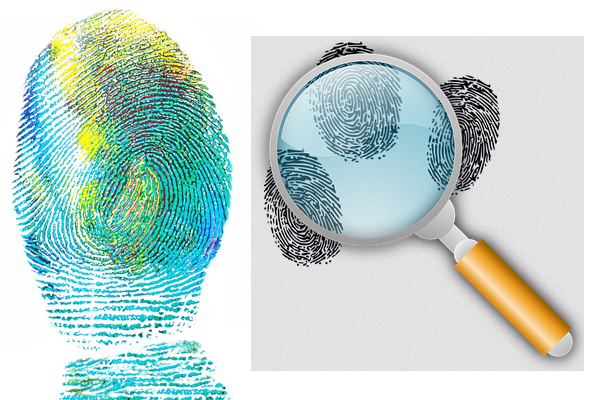Why are Fingerprints Used for Identification?
The plan of identifying people by their finger-prints, although at first used only on criminals, is put to many other uses. It was introduced originally in India, where it was of very great assistance to the British authorities in impressing the natives with the fact that at last no evasion of positive identification of culprits was possible. It was later taken up by the Scotland Yard authorities in England, and its use has since spread to practically every country in the civilized world.
It has been proven, to the entire satisfaction of everyone who has ever made a careful study of the subject, that every human being has a marking on his or her fingers which is different from that of any other person on earth. Human fingerprints are detailed, nearly unique, difficult to alter, and durable over the life of an individual, making them suitable as long-term markers of human identity.
Not only is it sure that no one else has a thumb or finger marked like yours, but it has also been established beyond dispute that every little detail will continue peculiar to your fingers as long as you have them.
The recovery of partial fingerprints from a crime scene is an important method of forensic science. There are many ways in which this knowledge is used to advantage; but numerous methods usually employed are particularly valuable. It is seldom that an unpremeditated crime is committed without its author leaving finger-marks on some object which is unconsciously touched, such as silver plate, cash boxes or safes, glassware or windows, polished wood-work, etc., and very often the professional criminal also neglects to take precautions against leaving his signature behind him. Moisture and grease on a finger result in fingerprints on many surfaces, and it is then a simple matter for the police to collect such marks for comparison with the finger-prints of anyone to whom suspicion may be directed.
Human fingerprints may be employed by police or other authorities to identify individuals who wish to conceal their identity, or to identify people who are incapacitated or deceased and thus unable to identify themselves, as in the aftermath of a natural disaster. The plan has also been utilized a great deal in the past for the identification of enlisted men in the army and navy. Finger-prints were made, immediately upon enlistment, of each separate finger and thumb of both hands. Deliberate group impressions were also taken (by ink or other substances) with the four fingers of each hand pressed down simultaneously to a smooth surface such as paper. Fingerprint records normally contain impressions from the pad on the last joint of fingers and thumbs, though fingerprint cards also typically record portions of lower joint areas of the fingers. When needed for any particular purpose, such finger-prints were usually enlarged by a special equipment, to many times their natural size and analyzied.
Related Links:
 The Hydrologic Cycle - A Multi-Phased Journey
The Hydrologic Cycle - A Multi-Phased Journey


